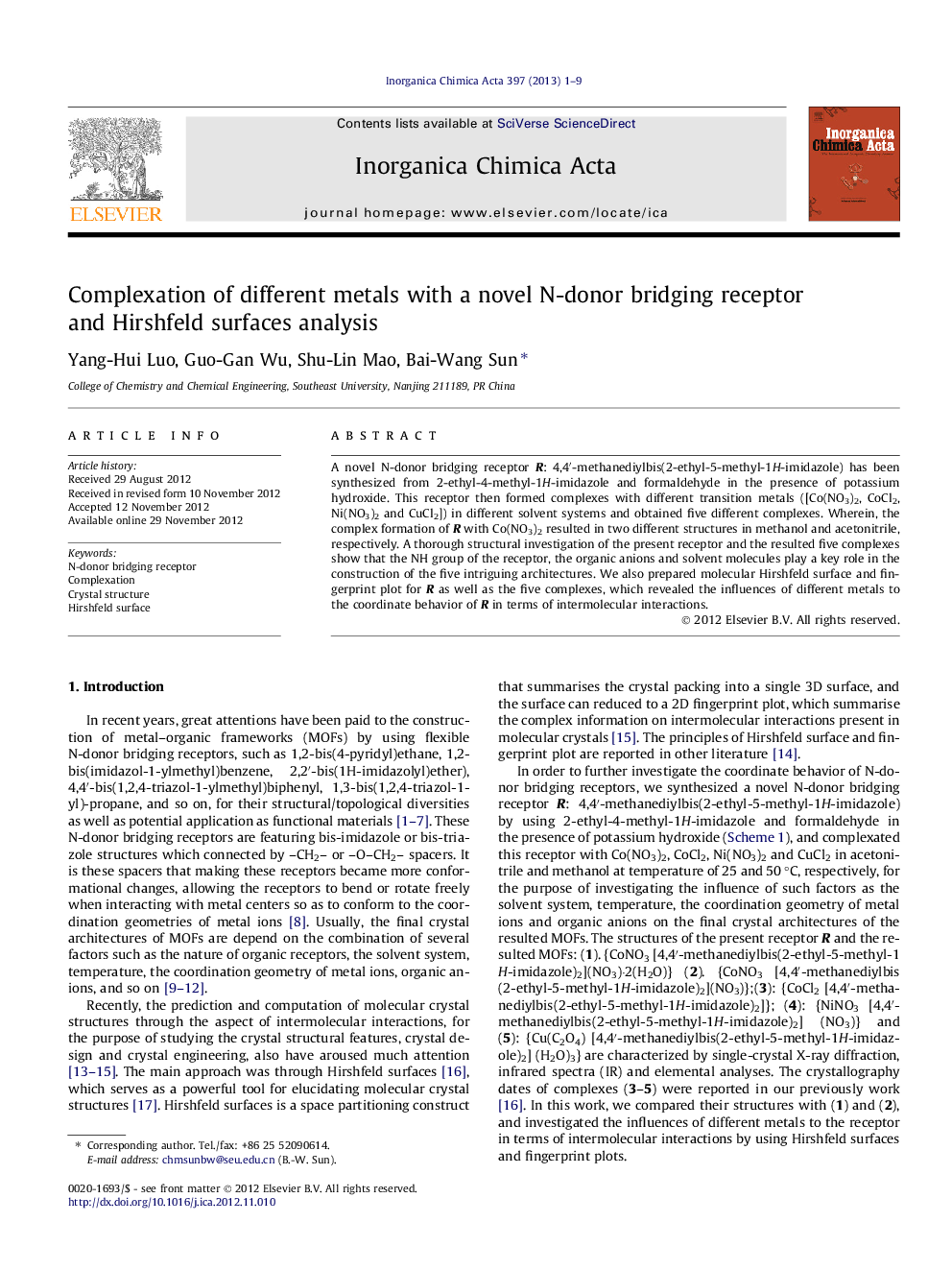| Article ID | Journal | Published Year | Pages | File Type |
|---|---|---|---|---|
| 1312362 | Inorganica Chimica Acta | 2013 | 9 Pages |
A novel N-donor bridging receptor R: 4,4′-methanediylbis(2-ethyl-5-methyl-1H-imidazole) has been synthesized from 2-ethyl-4-methyl-1H-imidazole and formaldehyde in the presence of potassium hydroxide. This receptor then formed complexes with different transition metals ([Co(NO3)2, CoCl2, Ni(NO3)2 and CuCl2]) in different solvent systems and obtained five different complexes. Wherein, the complex formation of R with Co(NO3)2 resulted in two different structures in methanol and acetonitrile, respectively. A thorough structural investigation of the present receptor and the resulted five complexes show that the NH group of the receptor, the organic anions and solvent molecules play a key role in the construction of the five intriguing architectures. We also prepared molecular Hirshfeld surface and fingerprint plot for R as well as the five complexes, which revealed the influences of different metals to the coordinate behavior of R in terms of intermolecular interactions.
Graphical abstractA novel N-donor bridging receptor: 4,4′-methanediylbis(2-ethyl-5-methyl-1H-imidazole) has been synthesized from 2-ethyl-4-methyl-1H-imidazole and formaldehyde. This receptor complexation with different metals salts into intricate structures. A throughout structural investigation as well as the molecular Hirshfeld surfaces of the present receptor and the resulting complexes have been analysed in this work.Figure optionsDownload full-size imageDownload as PowerPoint slideHighlights► A novel N-donor bridging receptor: 4,4′-methanediylbis(2-ethyl-5-methyl-1H-imidazole) has been synthesized. ► The coordinate behavior of this receptor with different metal salts has been investigated. ► We preformed Hirshfeld surfaces in terms of intermolecular interactions.
